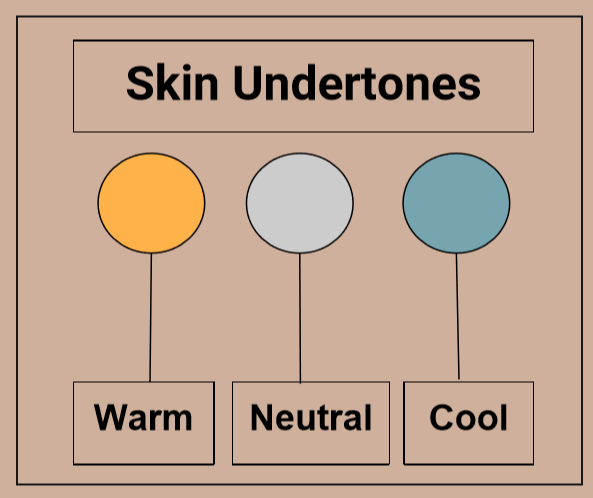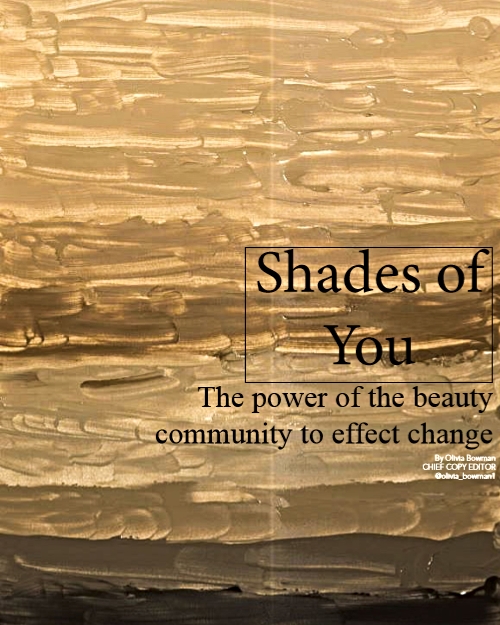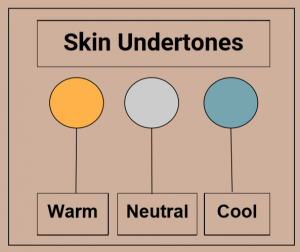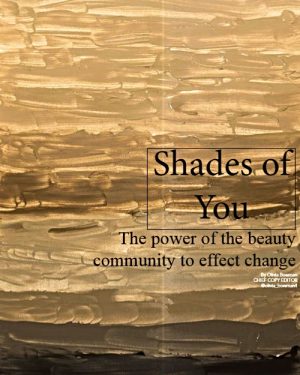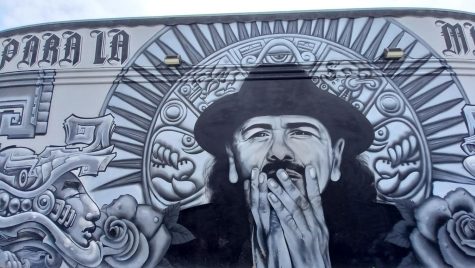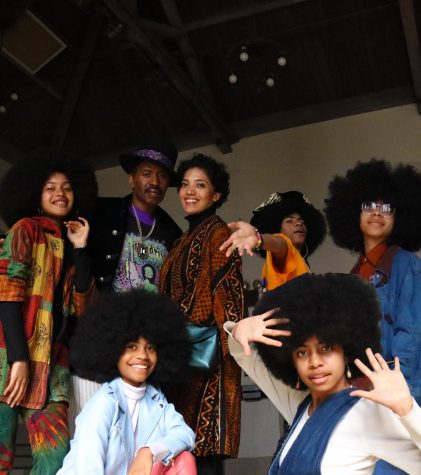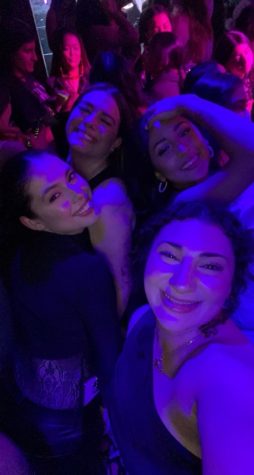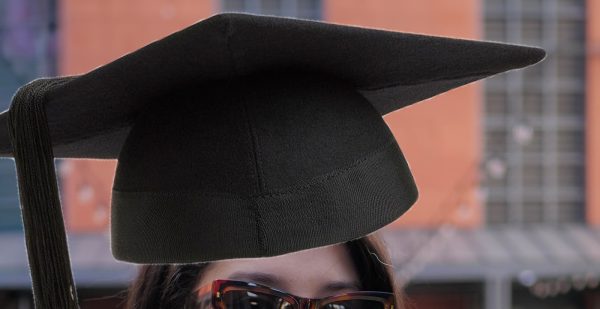Shades of You
The power of the beauty community to effect change
In 2016, Forbes valued the beauty industry at $445 billion dollars and saw 4 percent growth in one year. Statista reported that the U.S. was the “most valuable beauty and personal care market in the world.”
The makeup industry is a fast-growing behemoth but that doesn’t mean that companies can’t take a hit. Much like David and Goliath, members of the beauty community are proving their purchasing power. In an industry all about inclusion, trust and credibility, if a makeup company’s values don’t reflect that of their customers, the customers are more than willing to buy their products somewhere else. But the effect is magnified if the powerful beauty gurus of YouTube resolve to stop buying or mentioning the brand’s products.
Opening doors
With the creation of YouTube, the exclusivity of the makeup industry, which had previously been populated by professional makeup artists and makeup enthusiasts, broke open to allow anyone to share skills, tutorials or product recommendations.
The founding mother of the beauty influencer movement is Michelle Phan. Early in her career, Phan provided voiceover tutorials on various makeup looks. She started the trend that would catch on like wildfire and lead to 88 billion views on beauty-related content in 2017, according to Statista.
Before YouTube, makeup companies relied on celebrity endorsements to sell their product. But upon seeing the huge influence these fledgling beauty YouTubers had on their audience, many switched tactics and hopped on the trend by collaborating or sending beauty YouTubers new products to promote.
The high levels of trust that an audience has in a YouTuber can be seen when they buy products that beauty gurus recommend. This is why they are also called “influencers”. Beauty YouTubers wield a huge amount of power in the beauty industry, so their opinions are highly valued.
“Beauty gurus are the strongest tools we have,” Sephora employee Casey Riddle said. “It gives people that wouldn’t have a voice, a voice.”
The rise of beauty YouTube channels allowed even novices to receive education and training in a field that had not previously been available to them. The low barrier of entry allowed anyone to become a makeup pro without attending cosmetology school or even leaving their bed. As of June 2016, there were 5.3 million beauty videos on YouTube. The availability of makeup tutorials on the site has sparked huge growth in the beauty industry, with many trying their hand at makeup application.
The value of inclusion
The ongoing theme in the beauty industry has always been inclusion. Makeup professionals and amateurs alike share their videos on YouTube in an effort to help others perfect their techniques. Hate, condescension and exclusion are not tolerated and will get you quickly unfollowed. If a makeup brand excludes people by blocking honest reviews in their comment section or by defaming someone for their opinions on a product, or by simply not carrying makeup that is inclusive of all people, their products may be boycotted. The goal in the YouTube beauty community is simply to keep improving and learning.
While there is a masculine socialization that purports to say that men can’t wear makeup, many YouTubers such as Manny MUA, Jeffree Star, PatrickStarrr and James Charles have created huge inroads in breaking down barriers for men in the makeup industry.
There are tutorials for those who prefer to glam it up or go au naturel. However, the one area that still needs work is inclusion by makeup brands for people of color.
Backlash
Tarte sparked the ire of the beauty community when they released their Shape Tape foundation in mid-January 2018. The concealer of the same name was a huge hit and made it into many beauty YouTubers’ yearly favorites videos. So, the news of a foundation launching as part of the same line caused a lot of excitement. But when the shades were released, there was obvious disappointment. At their first launch, Tarte released 15 foundation shades. Of those, only three could be categorized as medium or dark.
People were outraged. And beauty YouTubers, acting as gatekeepers of the beauty community, also showed their dismay at the shade range. This is especially impactful since a survey by Variety found that YouTubers were the most influential figures to U.S. teens.
Powerful beauty (gurus)
Beauty gurus “make all the difference,” said Alli Bernard, a Sephora employee. “Social media is everything and beauty influencers show the way. Influencers’ tutorials and reviews can tell you how well a (makeup) launch went.”
YouTubers such as Jackie Aina and Alissa Ashley, who are women of color, made videos denouncing the brand’s limited shades. Many light-skinned consumers pledged to stop buying from Tarte because the line blatantly excluded people of color. Tarte issued an apology, saying that the coming launch of additional shades would be more inclusive. But it was too little, too late for many customers who expected more out of such a big name makeup company. Unfortunately, for many, this issue isn’t at all unusual. Josie Maran and It Cosmetics also offer a dismal shade range for darker complected people.
People with darker skin tones find it nearly impossible to find their foundation shade since many makeup companies cater to light-skinned women.
“There are limited options for people of color so many are forced to use something that doesn’t fit their complexion which makes them not as confident,” Bernard said.
The result?
“Darker people start to settle because they can’t find their match,” Sephora employee Cayla Shahan said.
There is an alternative, albeit not a good one. Riddle and Bernard both said that some people of color have to buy two foundations and mix them in order to get the right shade. However, this practice is costly, tedious and inconvenient. Especially when you take into account that most light-skinned women can walk into a makeup store and find their right shade in a single bottle of foundation.
Fly money fly!
The lack of darker foundations is a huge hole in the market considering that foundation is one of the most expensive makeup products and one that women are willing to spend more money on. In the year of 2016, Statista reported that people spent nearly $985 billion in the U.S. on foundation alone. When Rihanna’s makeup line, Fenty Beauty, launched in late 2017, it offered 40 shades of foundation; the darker shades kept selling out. Rihanna was able to fill a hole in the market that many mainstream makeup companies had not given attention to.
The demand for darker foundations is there, but many companies are not creating shades that will match all of their customers. Some brands deem themselves “inclusive” after only including one or two darker foundations. And even brands with a fuller line of darker foundations may be lacking because they don’t offer as many undertones as they do for people with light skin.
Not only are many makeup companies behind the curve culturally, but they are losing a ton of business by not catering to their black consumers. In a Nielson report, 63 percent of black women reported that they are willing to spend more on high-quality items. This is 12 percent more than non-Hispanic white women. Additionally, not including black consumers spells issues for makeup companies in the future.
Grow with your customers
In an interview with Fortune, Andrew McCaskill, Nielson’s senior vice president of global communications and marketing said that, “With 43% of the 75 million millennials in the U.S. identifying as African American, Hispanic or Asian, if a brand doesn’t have a multicultural strategy, it doesn’t have a growth strategy.”
“For years, the black community has been told ‘we don’t have shades for you’,” said Sephora employee Nestor Ramirez. But “brands that are friendly to the black community are well known in the black community.”
And he’s right. The rise of many indie brand makeup companies that cater to black consumers came about because there weren’t foundation shades in mainstream stores like Sephora or Ulta that fit them.
Don’t throw shade, make more
The greatest challenge for people of color in finding their right shade? Overwhelmingly, the answer was undertones. Makeup companies make light shades in three different undertones: warm, neutral, and cool. But the same can’t be said for darker shades.
“The shade range for dark skinned people is either too red or too orange,” Sephora employee Kat Baquirin said.
This makes one wonder, “if these companies recognize that light-skinned people have several different undertones to their skin, why don’t they have the same line of thinking for dark-skinned people?“
There are a few makeup lines that have been inclusive of dark-skinned people. Lancome is one, Nars is another. But not many other companies offered as many shades or had foundation formulations that went as dark.
Setting the bar
“With the new Fenty Beauty line, it set a precedent,” Bernard said.
Fenty Beauty was released in September 2017 to much critical acclaim. The brand boasted a launch of 40 foundation shades (on their first try) and catered to many medium and dark-skinned people. The launch was an instant success. It made $72 million in its first month. In the month it launched, department stores were selling one Fenty foundation every minute.
Even without Rihanna’s name behind it, the brand was groundbreaking: in its sales and its inclusiveness.
“There are not just 50 shades of white,” Shahan said. “There are deeper complexions and undertones too.”
Fenty Beauty put other makeup brands to shame, just by existing and representing all of the people that these companies had previously left out. With many makeup companies more concerned with jumping on the next holographic/unicorn/mermaid trend, Fenty Beauty is scooping up customers left and right by covering the basics: creating foundation shades that will match their consumers.
“They (makeup companies) shouldn’t let anyone feel left out,” Riddle said.
Change is slow in the makeup industry. Especially when it comes to brands’ inclusion of all people. Ramirez lamented the lack of neutral and cool undertones for dark-skinned people. But with the power and influence that beauty gurus have, they could change the game. If makeup companies started to include women of color beauty gurus in discussions about their products and not just as a face for their advertising, they could start selling products that would match the consumers they have historically ignored.
Baquirin echoed many in the beauty community’s sentiment when she said, “Everyone should have access to good foundation.”
Amen, sister.



